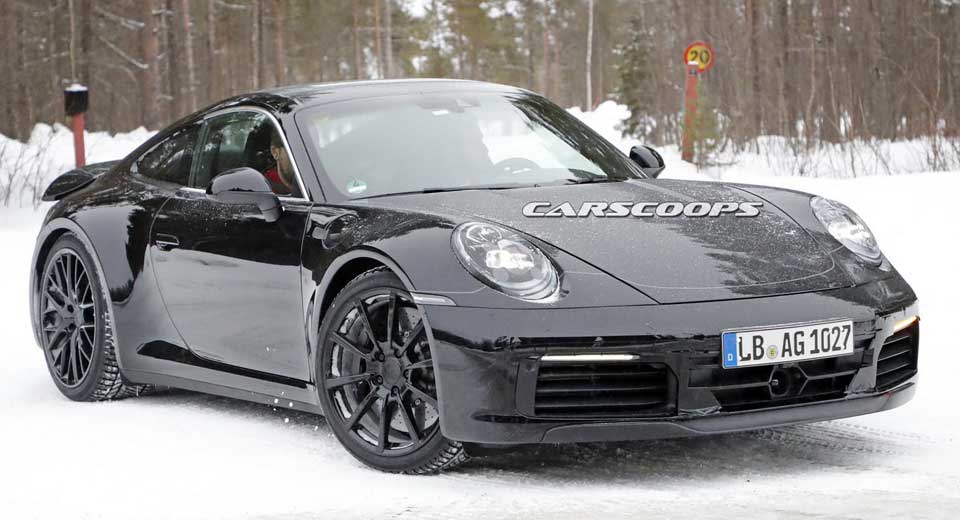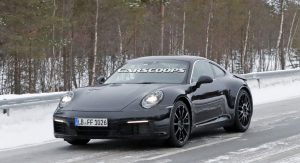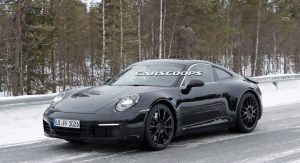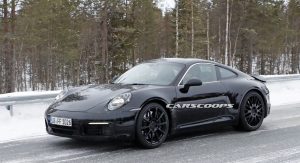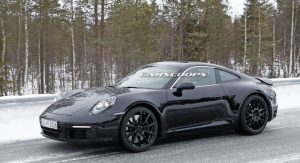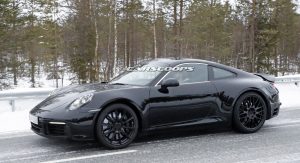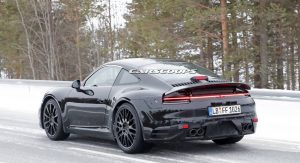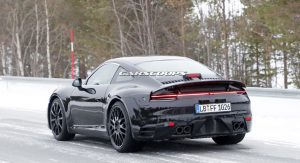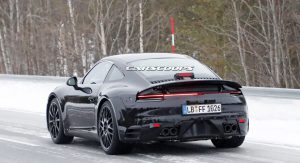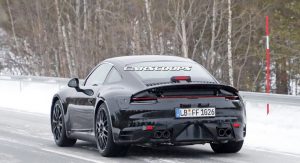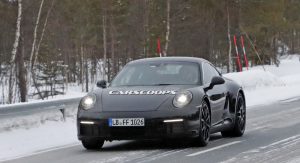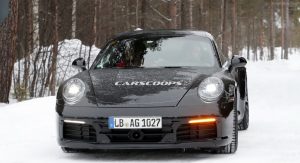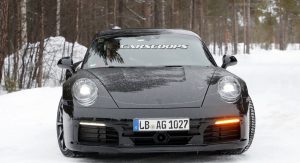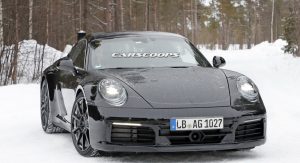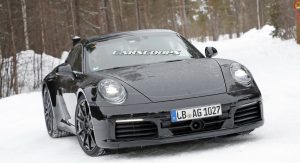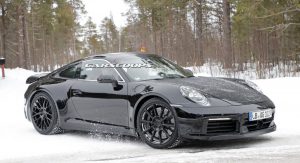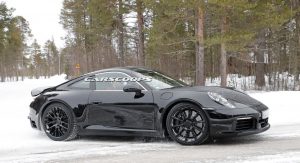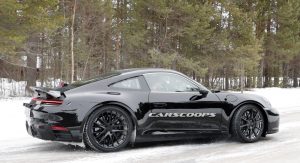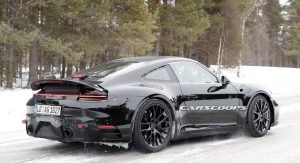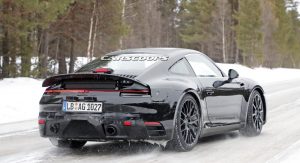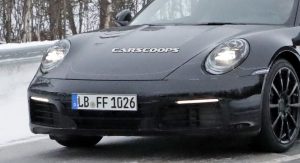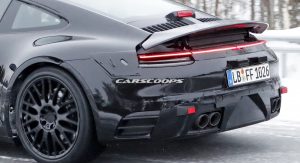Say what you will about Porsche, but it does not mess around. Not when it comes to the constant evolution of the 911. And as we can see, it’s already hard at work on the next iteration – and looks like it has been for some time already.
Though the current 991.2 was just introduced last year, and still has additional variants in store before it’s retired, we’re already seeing its replacement wearing what looks to be its near-production-ready bodywork.
The forthcoming 992 looks unmistakably like the 911s that have come before, but incrementally more streamlined and with updated details. The hood, for example, runs straight down to the front bumper, the taillights resemble the strip seen on the Mission E concept, and the rear spoiler forms an almost clamshell shape out of the rear deck.
Rumor has it that the ninth-generation 911 will finally spell the end of natural aspiration for the iconic sports car. Not just for the Turbo and Carrera models, but for the GT3 as well… all of which are now expected to adopt turbocharged flat-six engines. A hybrid version – perhaps even a plug-in hybrid – is tipped to follow as well, adding weight but also efficiency to the compact performance machine.
Purists may balk, but they’ll soon remember all the “advancements” that have threatened to defile the sanctity of the original design. Over the years, Porsche has added water cooling, all-wheel drive, four-wheel steering, electric power steering, automatic and dual-clutch transmissions, and so much more, yet the 911 remains the 911.
Whatever the powertrain, though, we can expect it to stay in the back – on top of the rear wheels where the Elfen’s engine has always been, even if its center of gravity keeps nudging forwards toward the center with each successive generation.
Look for the first versions of the new 911 to arrive sometime in 2019, kicking off a flurry of variants to follow – including coupes, targas, and convertibles; Carrera, Turbo, GTS, GT3, and even GT2 models, each packing more power than the next and every trick those German engineers can come up with to keep the backwards design pointed in the right direction.
Photo Credits: CarPix for CarScoops



